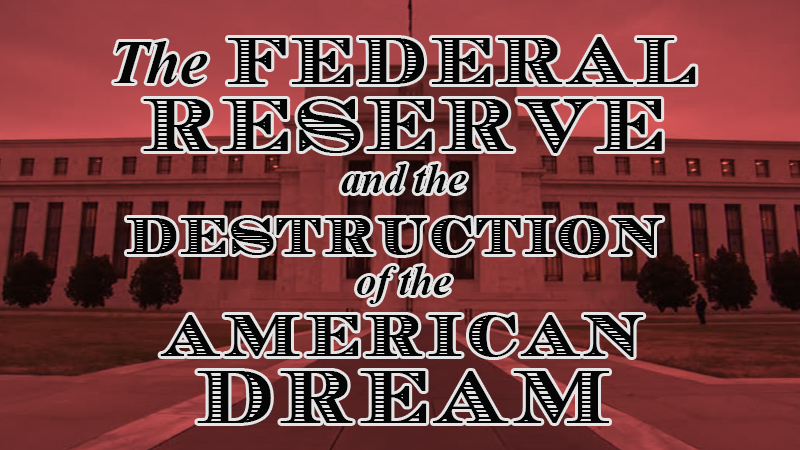December 14, 2016
“Government is a just execution of the laws, which were instituted by the people for their people’s preservation: but if the people’s implements, to whom they have trusted the execution of those laws, or any power for their preservation, should convert such execution to their destruction, have they not the right to resume the power they once delegated, and to punish their servants who have abused it?”
—John Wilkes, The North Briton, October 19, 1762
No truer words have ever been penned to the betterment of a people struggling to break free of tyranny. Indeed, John Wilkes is considered by some historians to be the primary source of inspiration for revolutionary colonial Americans given his staunch defense of religious liberty, prisoners’ rights and freedom of the press, rights we hold dear to this day.
So idolized was Wilkes, our forefathers named countless towns and babies in his name, quite the honor all things considered. You see, Wilkes was also an infamous pornographer and relished his notoriety, raising self-promotion to an art form. Even Benjamin Franklin was disturbed by the raunchy rake, which is saying something considering Franklin’s own proclivity for dalliances.
But what if the colonials, the “We the People” to be, assigned added value to Wilkes’ brand of self-cultivated ill-repute? What if he rose to such fascinating infamy precisely because he launched vicious attacks on the privileged? What better way to become a champion of the powerless? Ring any bells?
On November 8, 2016, a stunned TV audience bore witness to Wilkes’ legacy playing out across this great land. Millions of voters joined forces to punish their elected servants who had so egregiously abused their power. The establishment was disenfranchised overnight.
Since the election, a not entirely unexpected pivot has taken place. President-elect Donald J. Trump is sure to have recruited cabinet members whose rich resumes no doubt raise the hair on the backs of some of his most radical supporters. We can only hope the promised, the demanded, reforms are not sacrificed on the altar of deal-making. It will come as no surprise to regulars of these missives what the deepest betrayal would be for yours truly. Trump must hold firm on his commitment to return the Federal Reserve to its right place as an apolitical institution. The very future of the American dream depends upon our new president being true to his word.
Reams upon reams have been written on the downfall of the American Dream. Social mobility stunted. Generations of stagnant incomes. The decline in new business formation. Income inequality the likes of which hasn’t persisted since the days preceding the Great Depression. Money in the bank is a theory for most Americans, even those fast approaching retirement. If you do have savings, by the way, you are punished with insulting levels of interest rates.
And just so we’re clear here and inside the trust tree, let’s be honest and acknowledge how and especially where the anger this trap incites will manifest itself — that is, shout-out-loud, hostile and open conflict and on our streets. An exaggeration? If only that were the case.
Two weeks ago, Real Vision aired an interview conducted with me right after the elections were held. Many subjects were covered over the hour. But the one that struck the loudest chord with viewers was the issue of underfunded public pensions, which stands to reason given the headlines of late.
But the reaction from viewers was anything but expected. The bile, the contempt, the malicious back and forth in the comments between public and private sector workers stunned me speechless.
It was the teachers, firefighters and policemen vs. you name the line of work among those in the private sector. No side won in the event you’re holding your breath. And both made great points. Promises made should not be broken. Teaching our children, protecting our citizens from harm – noble, often thankless professions without question. By the same token, why should someone who has worked their entire life swallow a spike in their property taxes to foot the bill? It’s not as if the investments in their 401ks are not on the same vulnerable footing as those in pensions.
The outrage prompted a private conversation with a great friend who also happens to be the most insightful municipal bond strategist out there (a subtle way to say the following comments must remain anonymous).
The first order of business was a correction to my concern that Uncle Sam would be forced to bail out weak pensions in the end: “The federal government is most definitely NOT going to write checks to state and local government! If anything, the current lineup on the Hill wants to move more responsibility to the states (and they have no money anyhow).”
There’s no arguing with the no money part. But indulge the rest of the conversation as here’s where we get down to causality, to culpability.
“I would lay more blame on your friend, the Fed. Remember that public pensions were funded in 2000 and prior to that, earning a seven-to-eight percent return on assets was no sweat. For the last 15 years though, we’ve had nothing but volatility and low interest on fixed income, the place where conservative investors are supposed to go to deal with retirement investment. This has clobbered long-term investors of all shapes and the feedback to the economy is not fully being taken into account (in my opinion). If you are approaching retirement (read: baby boomers) and know you don’t have enough money in your 401k, you are not likely to run out and buy stuff.”
Few would dispute that Keynes’ Paradox of Thrift is alive and well. The ravages of the Fed’s low interest rate policy have forced an increasing number of Americans to save more to offset what they are not earning on their savings. The resulting decline in aggregate demand goes a long way to explaining the current economic recovery’s refusal to accelerate – even factoring in the third quarter’s 3.2-percent pace, current forecasts calling for 2.3-percent growth in the fourth quarter leave 2016 full year growth just shy of the two-percent mark.
But that’s the point of the Paradox. The millions of baby boomers retiring are going to cash, as they should to provide for this little thing called security. Still, the forced frugality sets an anything but virtuous cycle in motion, glaringly reflected in the economic health of the generations behind the boomers, an alarming number of whom still live with their parents. Bunking up remains altogether too common, which of course reflects mobility, or better said, the lack thereof.
The tie that binds the generations comes down to one word: debt. That’s where the Federal Reserve has inflicted the greatest damage. Set aside for a minute U.S. sovereign and corporate debt. While they’re mammoth challenges for tomorrow’s policymakers, it is household debt that has torn at the fabric of our culture and fueled the fury.
The latest figures from NerdWallet, produced by aggregating Fed and Census Bureau data reveal that the average household carries $132,529 in debt, including mortgages. That’s up from $88,063 in 2002. The cost of living, which the Fed lectures us is running too cold, has risen by 30 percent over the past 13 years, surpassing income growth of 28 percent over the same period.
What makes up the deficit? We read nonstop about student loans helping to bridge the gap. But it’s credit cards that have taken up the slack of late. The average indebted household is sitting on $16,061 in credit card debt, a hair shy of 2008’s high. As for those low interest rates, the average credit-card interest rate is 18.76 percent which translates into $1,292 in annual interest payments.
Add it all up and total household debt is $12.35 trillion. Estimates call for the prior housing boom peak to be surpassed by the end of this year.
Putting a face on these nameless numbers, these ‘indebted households,’ provides much-needed perspective. Imagine you’ve grinded out a living as a building engineer in Western Pennsylvania for over 35 years. Your pension was long ago converted into a fee-laden 401k that’s taken plenty of hits over the years. Meanwhile, the guy who works on the top floor of your building makes multiples of your income, a reality you don’t even resent. Your pride runs too deep to throw a pity party. But that’s not to say you don’t have your limits.
How exactly do you take the latest headlines in the Post-Gazette that at over $60 billion, the shortfall in Pennsylvania’s pension fund makes it the ninth-worst in the country? That state Democrats are battling to raise your already high taxes to cover the funding gap? Do you fall in line with the lemmings, taking your lumps? Do you apply for yet another credit card to cover your own newfound budgetary shortfall? Do you slip further behind, accepting your station and the demise of the American Dream?
Or do you switch sides and vote for the party that’s vowed to tackle pension reform come hell or high water? The outcome of Pennsylvania’s state legislative elections speaks for itself. Democrats lost seats in Harrisburg, Johnston and Erie. Outside Pittsburgh, there are no Democrats west of the Susquehanna leaving Republicans with a 34-16 majority, enough to override the governor’s veto. An override in the House is not in the cards — Republicans hold only 122 of the 203 seats. Still, it’s the largest GOP majority since the 1950s.
Now, back out to the rest of the country. Take a moment to study “The Two Maps of America.” A gracious reader suspecting I might miss the dueling visual wonders was kind enough to forward me the article published in the New York Times on November 16th, days after the election. In the spirit of paying forward good deeds at this time of giving, a link to the article can be found below.
What do these maps convey? Rather than a geographically divided nation, the first map reveals Donald Trump won most of the land mass. A stunning 80 percent of the counties voted Republican, many in traditionally blue states like Michigan, Minnesota and Wisconsin, and yes, Pennsylvania.
Meanwhile, so illustrative is the NYT’s Tim Wallace’s description of the second map, it would be criminal to paraphrase: “Hillary Clinton overwhelmingly won the cities, like Los Angeles, Chicago and New York City, but Mr. Trump won many of the suburbs, isolating the cities in a sea of Republican voters. Mrs. Clinton’s island nation has large atolls and small island chains with liberal cores, like college towns, Native American reservations and areas with black and Hispanic majorities.”
A separate publication recently highlighted the irony of Clinton’s staunch support in the ‘liberal core college towns.” According to the Economist, a college education in America equates to more in lifetime earnings than is the case in every other developed country save Ireland. As for the why: “the use of maths in the workplace is 10 percent greater than the OECD average. The supply is limited, since Americans are not particularly numerate.”
In the event you bristled at the pretense, at the elitist tone, you’re not alone. Our being “innumerate” means we’re incapable of conceptualizing and working with numbers. It means we don’t educate our children, that we’ve given up on the American Dream as evidenced by our de facto indentured servitude. To think, some still wonder how the media and the establishment drove our electorate to revolt.
President-elect Trump, consider this to be an open letter. The time has come to quit placating the masses with subprime this and that to still their spirits. Please fulfill your promises to represent them and their children with integrity, knowing the road ahead will be anything but easy, and that the temptation to allow business as usual to continue at the Fed will be enormous.
Millions upon millions of your supporters voted to do just as John Wilkes urged the oppressed colonials to do on October 19, 1762. They punished the servants who so abused their power by voting them out of office. Serve your country by refusing to squander their hard-fought liberty.
DiMartino Booth: The Federal Reserve and the Destruction of the American Dream


